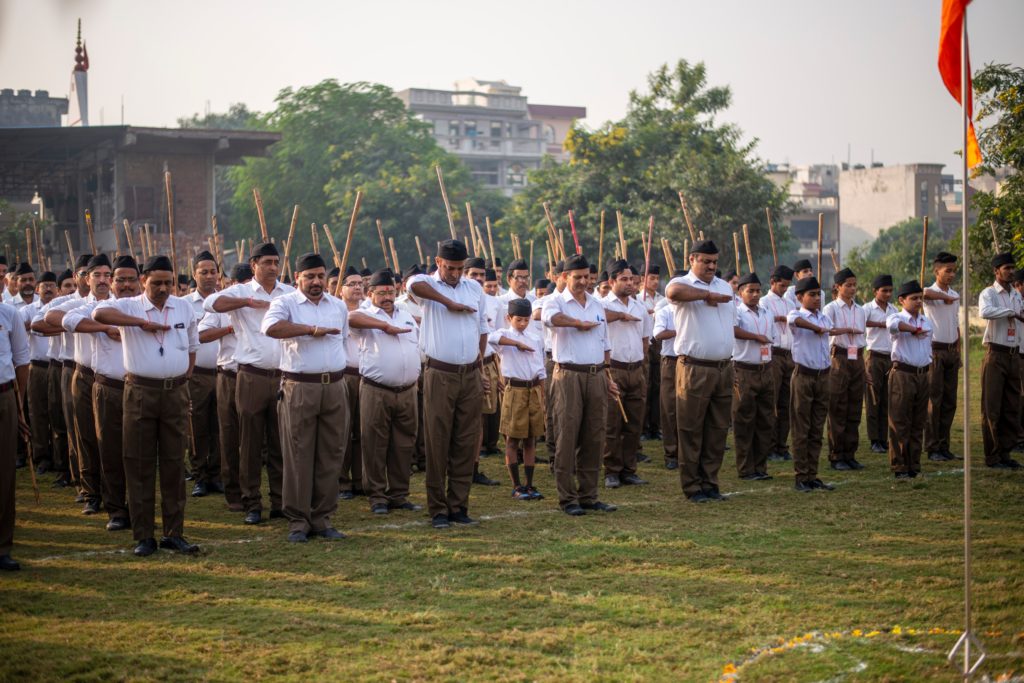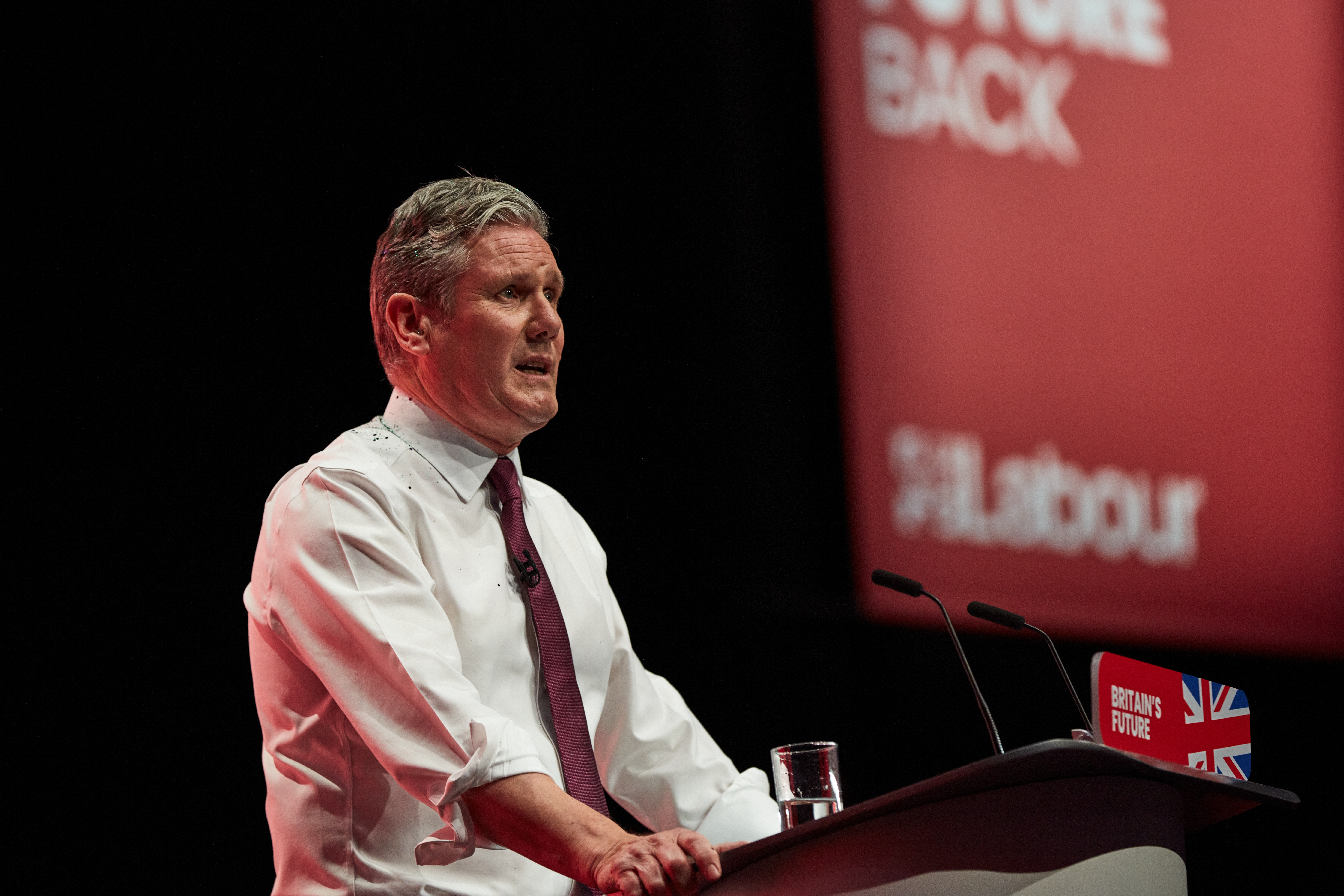Recent events in Leicester have brought home the dangers of the spread of Hindutva ideology, yet there is little understanding of Hindutva and the threat it poses in the UK and beyond, writes Ayaan Institute director Jahangir Mohammed.
Hindutva is not a new phenomenon which is linked only to Narendra Modi and his BJP party. Its ideology and politics have been developing slowly in India for well over a century, with even non-Hindutva parties and leaders at times contributing to it, by fuelling Hindu majoritarian nationalism for electoral gain.
Chandranath Basu first used the term “Hindutva” in 1892 to mean “Hinduness.” Back then Hindutva was an attempt to create a cohesive Hindu identity among a diverse group of people’s and beliefs considered “Hindu” by British rulers.
It was Vinayak Damodar Savarkar, an atheist, who was the father of the political ideology of Hindutva, which has little to do with the Hindu religion (although it is used to promote the ideology). Savarkar’s doctrines are set out in “Who is a Hindu” (originally published as “the Essentials of Hindutva” in 1923). It is the theory of ethnic Hindu nationalism. Savarkar considers the Aryan race and its history as essential to being a Hindu. The notion of a race belonging to, and claiming exclusive ownership of historic land, is like contemporary political Zionism.
In the ideology of Hindutva, the “promised land” in question is that which surrounds the Indus River. Savarkar claims the Indus River and the region around it was historically known as Sapta Sandhu (hence Sandhu for a real Hindu). For Savarkar, Hindutva was not just a word but a history. Therefore, Hindutva ideology also contains a revisionist history, with plenty of fiction.
According to Savarkar a Hindu is “one for whom India is both Fatherland and Holyland,” an ethnic, cultural, and political identity in which he includes all Indic religions, Hindu, Jain, Buddhist, and Sikh. In the Hindutva ideology, Islam and Christianity are not Indic but the religion of foreign invaders and occupiers, who converted Hindus to Islam. Savarkar outlines a vision of a Hindu nation (Hindu Rashtra) of an undivided India (Akhand Bharat) stretching across the subcontinent.
“We Hindus are bound together not only by the tie of the love we bear to a common fatherland and by the common blood that courses through our veins and keeps our hearts throbbing and our affections warm, but also by the tie of the common homage we pay to our great civilization – our Hindu culture.”
Subscribe to our newsletter and stay updated on the latest news and updates from around the Muslim world!
The propaganda, paramilitary and political wings
Keshav Baliram Hedgewar, the first leader of the RSS developed the Hindutva vision and ideology further by establishing the Rashtriya Swayamsevak Sangh in 1925 (RSS or national volunteer society). This grassroots volunteer army became the indoctrination and military training arm of a movement to establish a Hindu nation. The RSS conducted ideological and military preparation in training camps (shakas).
Hedgewar would take advantage of communal issues such as “cow protection.” He started marches as a method for provoking violence against Muslims through inter-communal tensions. This helped the RSS in spreading the ideology and increasing membership. These tactics are now common in India.
In 1927, after reaching only one hundred members, Hedgewar led a Hindu religious procession for the Ganesh festival past a mosque, playing loud drums and defying a tradition of respect of not playing music outside a mosque. The incident led to retaliation by Muslims, followed by three days of communal riots. The RSS and commentators portrayed the violence as “Muslim aggression” and “Hindu self-defense.”
Some Muslim residents have reported that a similar scenario triggered the disturbances in Leicester recently (around the festival of Ganesh and marching past a mosque). The Hindutva lobbyists portrayed the events in Leicester just as in 1927 – Hindu self-defence against Muslim aggression.
In 1940, Madhav Sadashivrao Golwalkar became the second leader of the RSS. He transformed it into a mass membership organisation, spreading into Jammu and Kashmir; and established global links through the Hindu Swayamsevak Sangh (HSS). Both occurred in 1940. On 18th October 1947, Golwalkar met with Maharaja Hari Singh, ruler of Kashmir, at the request of the Indian Home Minister. This was to persuade him to accede Kashmir to India which he did on 26th October 1947
Whilst claiming to be rooted in Indic culture and civilisation, both Savarkar and Golwalkar were more inspired by the ideology and tactics of European fascism and racial nationalism than anything Indian. Their attitude towards Muslims and Christians is more akin to the Spanish Inquisition’s treatment of Muslims and Jews. Golwalkar defines the Hindutva policy we now see being implemented by the RSS in India today.
“Hindus, don’t waste your energy fighting the British. Save your energy to fight our internal enemies that are Muslims, Christians, and Communists.”
“To keep up the purity of the nation and its culture, Germany shocked the world by her purging the country of Semitic races – the Jews. National pride at its highest has been manifested here. Germany has also shown how well-nigh impossible it is for races and cultures, having differences going to the root, to be assimilated into one united whole, a good lesson for us in Hindustan to learn and profit by.”

“The non-Hindu peoples in Hindusthan must either adopt the Hindu culture and language, must learn to respect and hold in reverence Hindu religion, must entertain no idea but those of glorification of the Hindu race and culture — in one word they must cease to be foreigners, or may stay in the country, wholly subordinated to the Hindu nation, claiming nothing, deserving no privileges, far less preferential treatment—not even citizen’s rights.”
The only future Muslims and Christians have in the Hindutva rule is to convert to Hinduism, be expelled from the country, or live in total subordination with no rights and a future genocide.
After the assassination of Mahatma Gandhi by Nathuram Godse in 1948, the Congress Party Government banned the RSS, and many members were arrested. Congress later banned the RSS on two more occasions. However, the RSS has continued to grow and in 2014 had up to six million members.
Another wing of the Hindu Rashtra movement is the Vishva Hindu Parishad (VHP world Hindu Council) established by Golwalkar in 1964. This has acted as the religious propagation arm of Hindutva nationalism. It is part of a family of many institutions (Sangh Parivar) striving to create the Hindu Rashtra. It includes the RSS, BJP, the youth wing of the VHP the Bajrang Dal (brigade of the deity Hanuman), and many others.
The VHP opposes the religious conversion of Hindus and participates in the re-conversion of Christians and Muslims to Hinduism. It engages in politicising issues, campaigning and litigation on the controversial issues affecting Muslims in India, restrictions on Islamic education and dawah, reclaiming mosques as sites of temples, cow slaughter, and recently “Love Jihad.”
Finally, there is the political wing of Hindutva the Bharatiya Janata Party (BJP) in power in India since 2014. The BJP has close ideological and organisational links to the RSS and Narendra Modi was once a member. The origins of the BJP rest in the BJS (Bharatiya Jana Sangh) established in 1951 as the political arm of the RSS.
In 1977, in alliance with other parties, the BJS formed the Janata Party and was in power for three years with Morarji Desai as the Prime Minister. After the dissolution of the Janata Party in 1980, the BJP was formed. Under its leader Atal Bihari Vajpayee, it had a number of spells in power in alliance with others, with Vajpayee as the Prime Minister.
Therefore, the BJP and the Hindutva movement have been involved in shaping India’s future and policies in one way or another for a long time. The movement is now so big now that there is little to stop Hindutva politics, policies, and violence in the foreseeable future.
The global spread of Hindutva ideology and tactics
Hindutva’s tactics are very much in the style of the Nazi and Italian fascists – the targeting of minority communities through marches and street-level provocations and violence. Using Hindu and Muslim religious occasions to instigate violence and communal conflict and disharmony. Whipping up the threat of the alien Muslims, open violence and beatings and lynchings of Muslims, and targeting and destruction of Muslim cultural and historical buildings. The worst of its violent tactics happened in the Gujerat massacres of over 2000 Muslims in 2002.
The Hindutva movement has adopted Goebbels-style propaganda and vilification of Muslims locally and globally.
Many Bollywood movies over the years have promoted ideas of Hindu nationalism, revisionist history, and the Muslim threat. Added to this, modern media has been weaponised to demonise Muslims, especially since Modi and the BJP came to power. This “Modi media” with global satellite channels is spreading anti-Muslim hate to Hindu’s worldwide (referred to in India as gouthi media).

Then there are social media platforms and an army of trolls waging disinformation campaigns and pumping out hate against Muslims around the world. This global propaganda serves two purposes: 1) provides justification for Hindutva plans for Muslims in India by portraying Islam and Muslims as a threat to all societies. 2) to prevent a global Muslim rallying to the defence of Muslims in India by exposing the Hindutva strategy, because most European and other powers in practice will care and do little.
In particular youth wings of Hindutva, such as Bajrang Dal, Sanatan Santhsa, and Sri Ram Sena are active on social media and have even been flagged up as threats by Facebook with no action being taken.
There is little doubt that Hindutva media and social media propaganda has radicalised many Hindus around the world today.
Should the RSS and other Hindutva groups that endorse the ideology and violence of the Hindutva movement be designated as terrorist groups? The UK terrorism laws apply to threats posed inside and outside the UK.
The law defines terrorism as: “The use or threat of one or more of the actions listed, and where they are designed to influence the government, or an international governmental organisation or to intimidate the public. The use or threat must also be for the purpose of advancing a political, religious, racial, or ideological cause.”
Given what we know about the Hindutva ideology and the violent actions and statements on record by members of the RSS and various groups in the family, there is no doubt in my mind that they would constitute terrorism under UK law. The case for proscription would be strong if there was political will.
Britain will of course place trade with India above such considerations. However, the UK will pay the price for failure to act now later, in places like Leicester, London, and inter-community tensions. For the Muslim community in the UK and around the world, especially of subcontinental heritage, silence and inaction is no longer an option. Hindutva is not just waging a war against Indian Muslims but hundreds of years of Muslim history, heritage, religion, and culture in India.



















